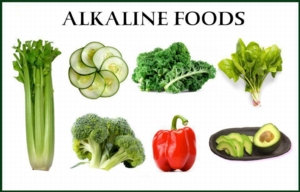 One of the keys to maintaining optimal health is discovering the correct way to eat food in order to maximize your alkaline potential, and in turn prevent chronic disease from developing in your body. But in order to do this, you have to first learn which foods are alkaline-forming, and which are acid-forming, as well as how to eat them in balance.
One of the keys to maintaining optimal health is discovering the correct way to eat food in order to maximize your alkaline potential, and in turn prevent chronic disease from developing in your body. But in order to do this, you have to first learn which foods are alkaline-forming, and which are acid-forming, as well as how to eat them in balance.
The continuous onslaught of chemicals, additives, and genetically-modified organisms (GMOs) throughout the common food supply, not to mention modern society’s heavy reliance on processed, nutrient-stripped foods, is no doubt taking a huge toll on human health. Most people also eat copious amounts of food that promote acidity, which in turn makes them more prone to disease.
What most people fail to realize is that their bodies are constantly trying to achieve a state of equilibrium at a pH of about 7.365, which is slightly alkaline. To do this, the body draws from the nutrients you put into it via food, which either acidifies or alkalizes the blood. When there are not enough nutrients to maintain this slightly alkaline state, the body draws from backup nutrient reserves in the bones and other places.
When these backups run dry, the body’s internal biological terrain becomes a hotbed for chronic disease, which is right about the time the mainstream medical system begins rolling out the drugs. A much simpler solution; though, at least for most people, is to simply switch up their diets and begin to incorporate more alkaline-forming foods into their everyday meals.
Alkaline-forming foods vs. acid-forming foods
As you may have already guessed, most of the foods that people eat today — refined grains, pasteurized dairy, conventional meat, vegetable oils, artificial sweeteners, and processed sugars — are acid-forming foods. Rather than contribute to the roughly 80 percent alkaline-forming, 20 percent acid-forming diet, which some experts in the field believe to be ideal, a diet composed primarily of these acid-forming foods inhibits nerve function and damages cells.
“All natural foods contain both acid and alkaline-forming elements,” says the Conscious Living Center. “In some, acid-forming elements dominate; in others, alkaline-forming elements dominate. According to modern biochemistry, it is not the organic matter of foods that leave acid or alkaline residues in the body. The inorganic matter (sulfur, phosphorus, potassium, sodium, magnesium and calcium) determines the acidity or alkalinity of the body fluids.”
According to several different resources on acid and alkaline-forming foods, some of the best alkaline forming foods include:
• Cucumbers
• Chia seeds
• Figs
• Sprouts
• Dates
• String beans
• Root vegetables (radishes, carrots, beets, turnips, rutabagas)
• Almonds
• Avocados
• Cruciferous vegetables (broccoli, cauliflower, cabbage)
• Fresh coconuts
• Raw, grass-fed milk
• Leafy greens (kale, spinach, Swiss chard, turnip greens)
• Raisins
• Lemons
• Cayenne pepper
• Wheatgrass
• Melons (watermelon, cantaloupe, honeydew)
These are just a few of the most alkaline foods available, and there are many more that you can see at the charts linked below this article. But this will give you an idea of the types of foods you should focus more heavily on incorporating into your diet, while decreasing consumption of acid-forming foods like alcohol, breads, feedlot-based meats, sugar, and coffee.
Be sure to check out the resources below for more information about acid-forming and alkaline-forming foods.
Sources for this article include:
Written by Jonathan Benson for the Natural News, August 13, 2012.
FAIR USE NOTICE: This site contains copyrighted material the use of which has not always been specifically authorized by the copyright owner. We are making such material available in our efforts to advance understanding of environmental, political, human rights, economic, democracy, scientific, and social justice issues, etc. We believe this constitutes a ‘fair use’ of any such copyrighted material as provided for in section 107 of the US Copyright Law. In accordance with Title 17 U. S. C. Section 107, the material on this site is distributed without profit to those who have expressed a prior interest in receiving the included information for research and educational purposes. For more information go to: http://www. law. cornell. edu/uscode/17/107. shtml“
